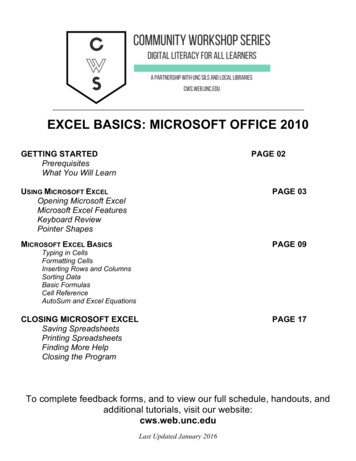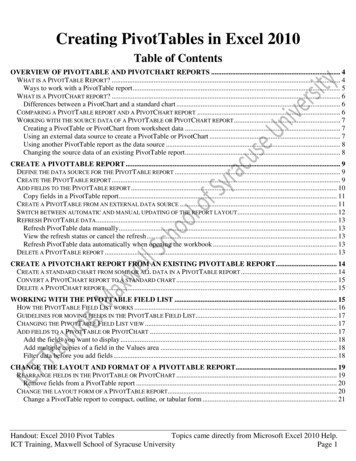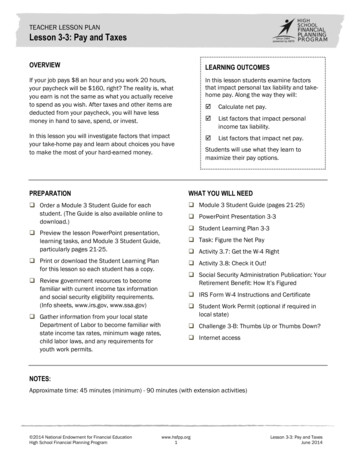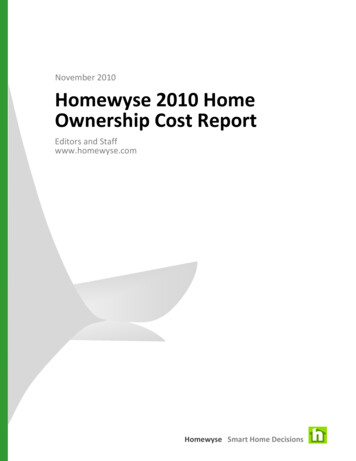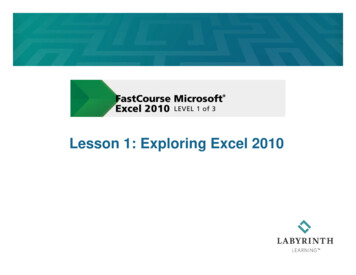
Transcription
Lesson 1: Exploring Excel 2010
Learning Objectives After studying this lesson, you will be able to: Explainways Excel can help your productivity Navigatearound the Excel window and issuecommands Entertext and numbers into cells Distinguish Save,2between a text and a number entry in a cell“save as,” and close workbooks
Presenting Excel 2010 How do you think you may use Excel? Budgets Lists Tables3 Trackinginformation Chartingdata
Looking at the Window4
Mousing Around in Excel Mouse pointer shape determines functionNote! The active cell inthis figure is A1.Can you find all eight different mouse pointers in this figure?5
Navigating with the Scroll BarArrows let youscroll line by lineDrag the scroll box tocontrol your scrollThe vertical and horizontal scrollbars both work the same wayTip! Remember that when you navigate with thescroll bar, the active cell does not change.6Click the scroll bar tomove one screen viewat a time
Tabs, Ribbons, and ToolbarsQuick AccessToolbarTabsRibbonNote! Notice that you can add icons to the Quick AccessToolbar. You can also add custom tabs to the Ribbon.7
The File Tab The File tab gives you accessto commands that allow you to: Performfilemanagementtasks Chooseoptionsto control howyou work withExcel8
Contextual TabsAppear in context with thetask being performed9
Dialog Box LauncherWhen you click the dialogbox launcher in the Fontgroup, the Format Cellsdialog box will open withthe Font tab displayed10
Hide the Ribbon Create more room on the screen to workExpanded viewCollapsed view11
Entering Data Types of data Completing entries Enter and Cancel buttons Deleting and replacing entries Long textAll of the text is contained in cell A112
Working with Numbers The Number group on the Home tab allows you tochoose how many numbers in the selected cells willappearThe dialog box launcher opens a windowwhere you can choose from additionaloptions to format your numbers13
Saving Workbooks Save: Used for files that have already been saved;replaces a copy in the same place with the samename Save As: Used to save a file for the first time to with anew name or in a new locationThese commands are accessedvia the File tab of the Ribbon14
Closing Documents The File Tab menu contains the Close commandNote! If changes were made since the lastSave, Excel asks to save before closing.15
Exiting From Excel The File Tab contains theExit Excel command Closes the applicationand all open workbooks Prompts you to save ifyou have unsaved editsNote! You can also click the Close button at the top-rightcorner of the window to Exit from Excel.16
Exiting From Excel The File Tab contains the Exit Excel command Closes the application and all open workbooks Prompts you to save if you have unsaved edits 16 Note! You can also click the Close button at the top-right


